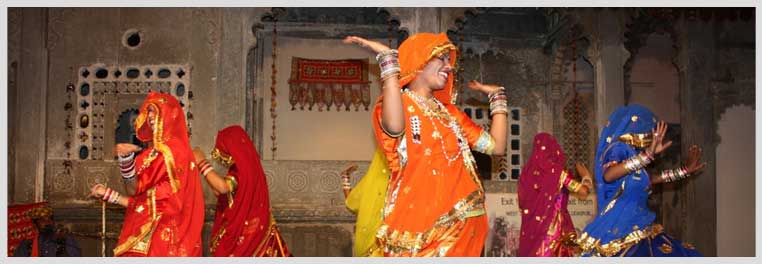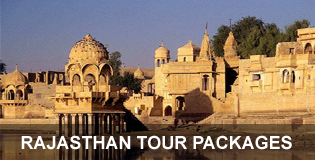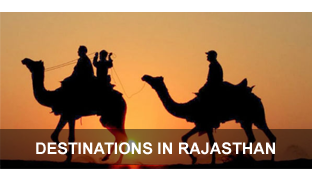Rajasthani Folk Dance : Famous For Its Tradition & Rich Culture

Folk dances reflect the communion of native and human - beings through physical movements, gestures and various modes of expression. Forms of simple and unchoreographed dances are limitless.
But then, Rajasthani folk traditions have some colourful dances that are particular to the region. The Chari dance has elementary choreography in it. Named after the brass vessel, women of Mali community perform this dance as a gesture of welcome to an honoured .guest, corourfully dressed and bejewelled, the women with veils covering their faces, dance with brass vessels balanced on their heads containing flaming cotton seeds. But the most popular and well known is the Ghoomar dance,. This dance is colourful and is quite spectacular as the women whirl in acircie to the accompaniment of a kettle drum. The dancers move both clockwise and anti-clockwise round the imaginary circle, gyrating individually or holding hands and taking measured steps. With the rising tempo of the drum and the accompanying music towards the climax, the dancers separate into pairs and swirl their swinging skirts
Dances of men, employing sticks, form a category of their own. The Gair dance has men moving in circles using their sticks to create.a rhythmic beat as they use them to strike against each other. The Kachi Ghodi dance, which is performed during marriage festivities, is quite amusing and shows the bridegroom's party in a battle scene. Another interesting dance is the Bhawai. This dance entails balancing seven or nine earthen or brass 'pitchers on one's he0ad while performing bare feet on a sheath of swords or bits of broken glass . This holds the spectator spell-bound.






